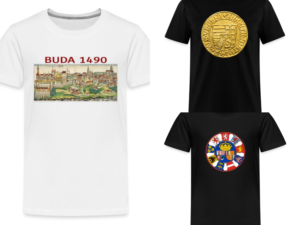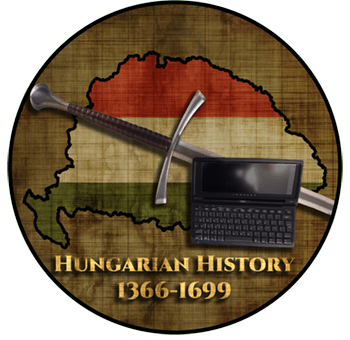
Fertőrákos (German: Kroisbach, Croatian: Krojspuh, old German: Krewspach) is a village in the Sopron district of Győr-Moson-Sopron County in Hungary, about 10 kilometres northeast of the district seat, directly on the Austrian border. It has outstanding historical and artistic monuments; it is situated in a beautiful natural environment. Location: https://tinyurl.com/4vscnyvp

The Romans were already present in the area around Fertőrákos in the 1st century. The only sanctuary of Mithras in Hungary was found north of the settlement, near the present border, in 1866. Based on the coins found in the urns, the sanctuary was dated to the first half of the 3rd century AD.

The Rákos estate was probably given to the bishopric of Győr by St István at the time of its foundation (around 1001). In 1199, in a charter of King Imre (Hemiricus Dei Grati, Hungarie, Dalmatie, Crohatie, Rameque Rex), it was mentioned as ad villam Racus. Lőrinc Comes was given land because he saved the king’s life during a hunt.

The charter of Béla IV has been preserved in the transcription of King Zsigmond IV: “The letter of the late King Béla, with the double seal, declared it as a privilege, issued on the second day of June, in the 18th year of his reign, 1244,… the Venerable Father Omodeus, by the grace of God, Bishop of Győr… has obtained a renovation of the harbour and harbour toll of the marsh and lake commonly called Fertő, which is in the possession of the estate of the Church of the Blessed Virgin, called Rákos, near the same town…” However, the original charter was issued in 1254.

According to some historians, the castle of Rákos was built by Bishop Kőszegi Miklós between 1311 and 1326 to protect the bishop’s estate centre [Fügedi, Engel]. This is supported by several documents of King Lajos I and Zsigmond, which also mention the castle of Rákos. This castle wall at first surrounded only the bishop’s castle, the servants’ houses, and the customs house on the present site.

According to a document dated July 3, 1311, Bishop Kőszegi Miklós of Győr, in the presence of Cardinal Gentilis, the papal envoy, agreed with the city of Sopron to pay 100 marks for the destruction of the bishop’s palace and buildings in Rákos by the citizens of Sopron. The name Kroisbach appeared in this document.

In Sopron, on January 28, 1345, Bishop Kálmán of Győr ordered the castle lords of the castle of Rákos to collect the tribute on the vineyards belonging to the castle according to the same rate as the citizens of Sopron.

In 1371, King Lajos I (the Great) ordered the castellans of Rákvár (‘castellano de Rakwar’) [Rákos] to collect only the toll from the citizens of Sopron on the vineyards of Dorm and Stephansweingarten belonging to the said castle.
In his charter of 3 November 1429, King Zsigmond instructed the convent of Csornai to redraw the border between the bishopric of Győr and the city of Sopron, as the border between the parties was disputed, as described in the letter of King Béla IV of 1244 (“… castri et possessionis Rakus nominatarum…”). In 1430, the Bishop of Győr’s castellan at Rákos was Horváth Jankó.

After the death of King Albert, the widowed Queen Elisabeth of Luxembourg mortgaged the town of Sopron to Emperor Frederick III. The emperor appointed Sigismund Ebersdorfer as the captain of Sopron, who took advantage of the death of Bishop Zólyomi Benedek of Győr in 1442 to seize Rákos from the bishopric. Then, to protect his forcibly acquired estate near Rákos, he had a small but strong castle built on a hill above the Katzendorf settlement near the Fertő River, with peasants from Rákos and other villages.

This was Macskakő or Katzenstein Castle. In 1452 Albert Ebersdorfer sold Rákos and Katzenstein Castle to John Ladendorfer. In 1455, Ladendorfer sold his estates for 850 forints to Konrád Weitraher, who had raided the area from Macskakő castle. The castle of Macskakő was finally destroyed by King Matthias at the end of 1464.

In 1465, Bishop Salánky got back his estate in Rákos, and the following year, he collected the tithes from his estate manager, Vilmos Schildmann, who had previously rented the land to Ulrik Grafenegg and Cillei Ulrik each year.
Bishop Dóczy Orbán of Nagylucs (1481-1486) was a favourite of King Matthias, who stayed at Rákos during the Austrian wars of Matthias, where he invited the king to his castle (the king is said to have gone hunting there).

After Mohács (1526), during the internal war between the two kings, the bishopric of Győr lost its sovereignty over Rákos. On 4 January 1527, King Ferdinand I temporarily granted the estate to the city of Sopron. In 1528, Ferdinand recaptured Rákos from the Sopron people and ordered the population to fortify the damaged castle of Szombathely. During the sieges of Vienna in 1529 and Kőszeg in 1532, Rákos was also sacked by Turkish raiding troops. In 1533, the settlement was in the possession of Bakits Pál.

Cardinal Bishop Draskovich György (1578-1587) often stayed in Rákos. It was he who started the reconstruction of the ruined bishop’s castle. After the fall of Győr in 1594, the Bishop of Győr moved his seat to Rákos. In 1582, he obtained a licence from King Rudolf to hold two fairs a year, and thus granted Rákos the status of oppidum, or market town. The walls of the town may have been built at this time. Bishop Pethe Márton (1598-1605) chose Rákos as his permanent residence.

During the 1619 campaign of Bethlen Gábor, Sopron opened its gates to the Prince’s armies, who in gratitude gave Rákos to the city for 12,000 forints. In 1622, the settlement was returned to the Bishop of Győr.
The minutes of 1663 report that Bishop Széchenyi György had the previous year “had the old church largely demolished and rebuilt on its foundation stones…”

During the 1681 Diet of Sopron, Emperor Leopold visited Bishop Széchenyi György here. In 1683, the Turks, advancing towards Vienna, completely sacked Rákos and also carried out great destruction in the castle. The castle was still in a ruined state in 1687 and was finally repaired in the 1690s. At that time, mainly Moravian and Austrian settlers came to the almost completely uninhabited Rákos.

During Rákóczi’s War of Independence, the Kuruc troops and the Imperials took turns. Several members of the population took part in the defence of Sopron against the Kuruc. In 1712, there was a plague, in 172,8 a fire.
Bishop Zichy Count Ferenc (1743-1783) is credited with the final construction and decoration of the castle. He often stayed here.

In 1945, together with the other large ecclesiastical estates, the manor of Rákos also passed into the hands of the state. After more than 900 years, the landlordly jurisdiction of the bishops of Győr ceased to exist, leaving only the lordship of the parish, but that too was soon abolished.
Source: http://www.varlexikon.hu

Dear Readers, I can only make this content available through small donations or by selling my books or T-shirts.
Please, support me with a coffee here: https://www.buymeacoffee.com/duhoxoxa
You can check out my books on Amazon or Draft2Digital. They are available in hardcover, paperback, or ebook:
https://www.amazon.com/dp/198020490X or at https://books2read.com/b/boYd81

My work can also be followed and supported on Patreon: Become a Patron!http://Become a Patron!
Become a Patron! Donations can be sent by PayPal, too: https://tinyurl.com/yknsvbk7


https://hungarianottomanwars.myspreadshop.com/all
Subscribe to my newsletter here: https://tinyurl.com/4jdjbfkn
Here are a few pictures of Fertőrákos:































